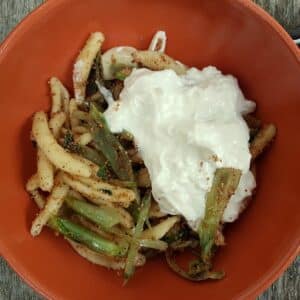
The Romans are crazy about puntarelle, the flower shoots of Catalonian chicory, and you will be too after you have tried this delicious puntarelle pasta with burrata.
The puntarelle’s unique taste makes this a special dish to try, and it is beautifully complimented by the rich and creamy burrata.
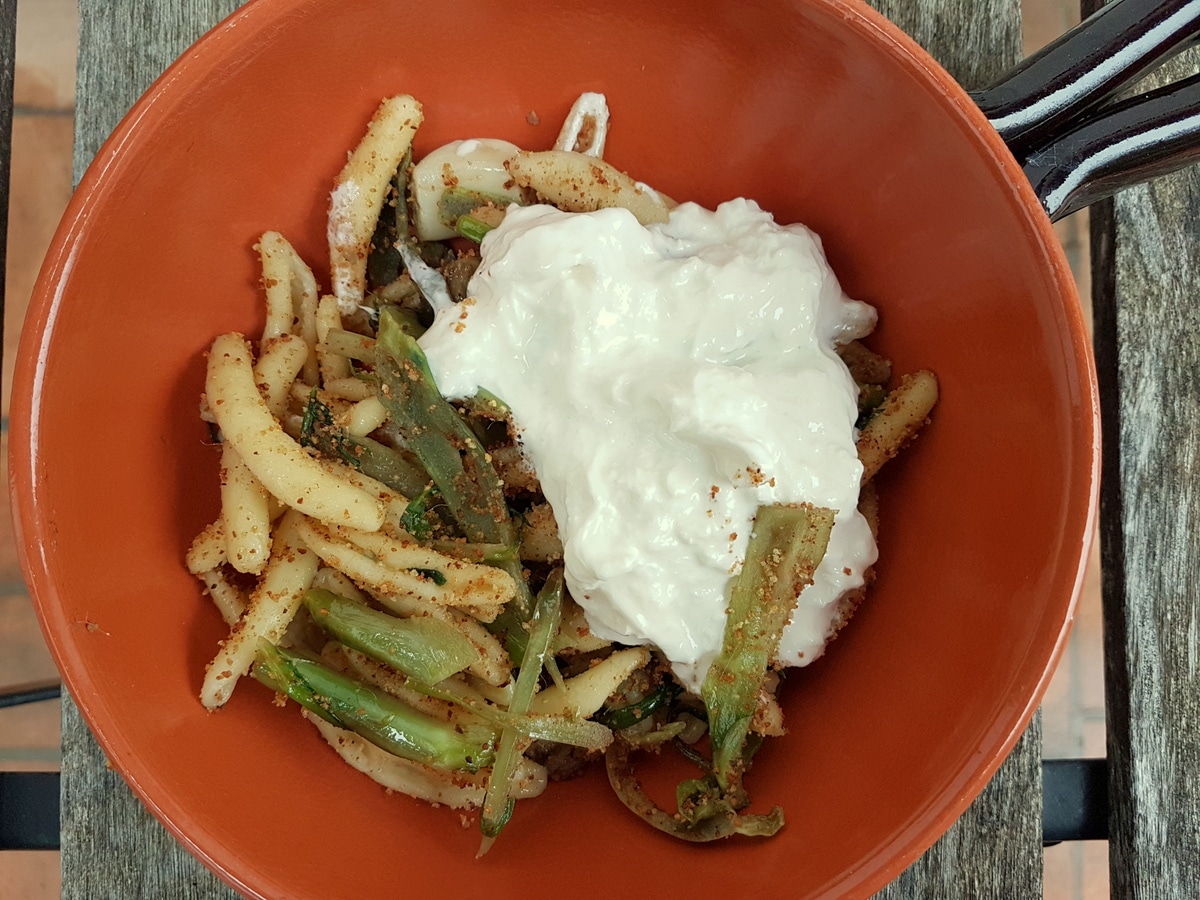
History
Puntarelle is a vegetable that many have never heard of. It is, in fact, the flower shoots of Catalonian chicory (cicoria catalogna), a member of the chicory family that also includes endive, escarole and all those delicious varieties of radicchio, such as Castelfranco, Verona, Treviso and Tardivo.
Italians love chicories, many of which have been cultivated here in Veneto, where I live, since the 15th century. However, puntarelle, also known as asparagus chicory, is cultivated further south and is especially popular in Rome and Puglia.
Roman recipes for puntarelle
The Romans eat puntarelle both in a delicious traditional salad with an anchovy sauce, called puntarelle alla romana, and in pasta. Although uncommon outside of Italy, puntarelle is beginning to become popular with restaurant chefs in the US and other countries.
So, some farmers are growing this type of chicory now. And I know it’s possible to find it at a number of UK or US farmer’s markets. If you see it, buy it! You won’t be disappointed!
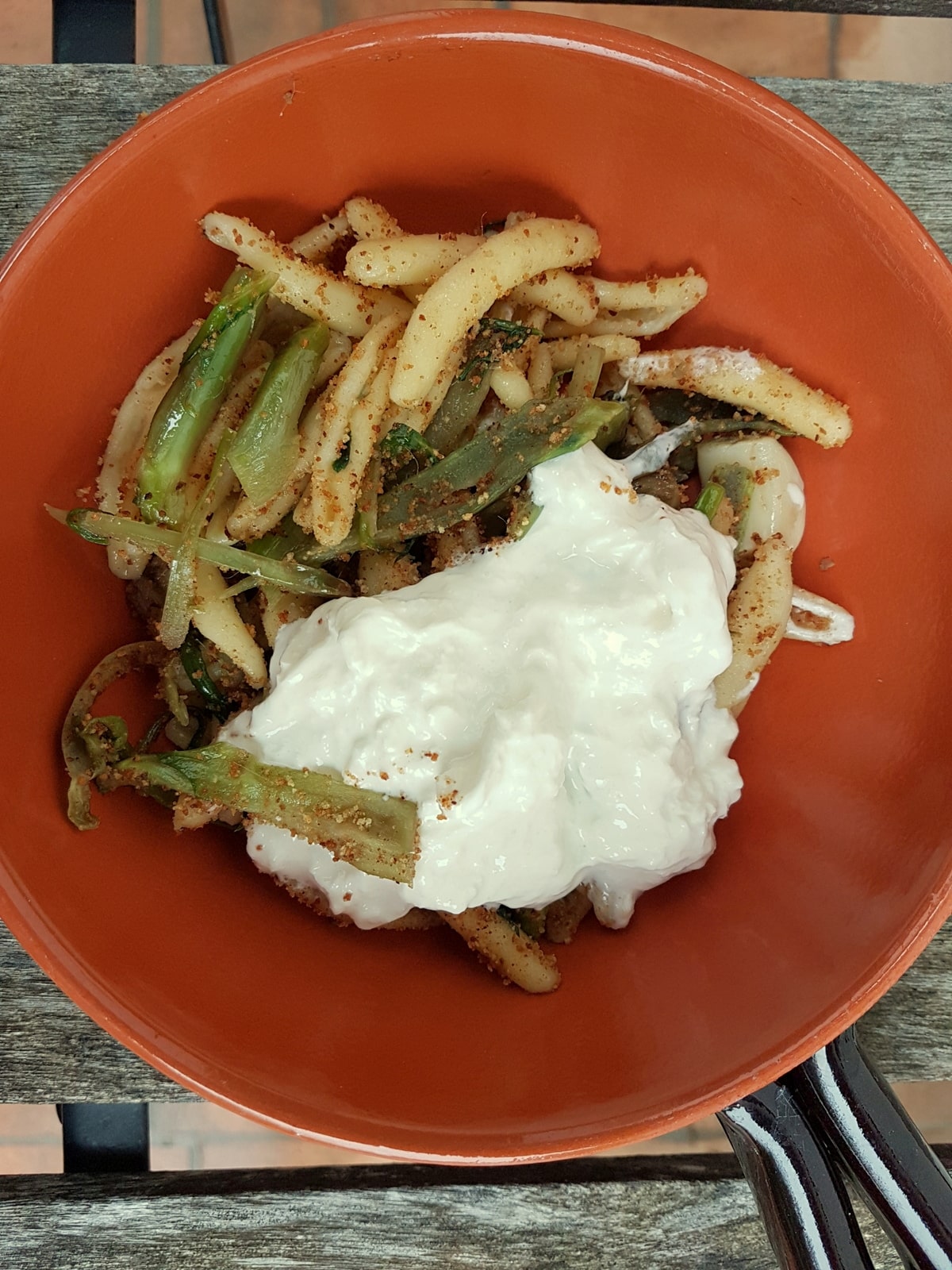

The most traditional Roman way to serve puntarelle with pasta is very similar to this recipe, although without the burrata and with spaghetti. However, the puntarelle I bought came from Puglia. In fact, Puglia cultivates the most puntarelle in Italy. So, I decided to prepare this puntarelle with pasta together with other typical ingredient from Puglia, namely cavatelli pasta and the burrata.
Ingredients
Cavatelli Pasta: This pasta’s shape is perfect for catching and holding the sauce; you can even use homemade cavatelli. If cavatelli is unavailable, other types of short pasta like casarecce, fusilli, or olive leaf pasta also work well. And for a traditional Roman approach, spaghetti is also commonly used with puntarelle.
Puntarelle Chicory: Known for its distinct, slightly bitter flavor, puntarelle is a popular ingredient in Roman cooking. If puntarelle is not available, other greens like endive, escarole, or even broccoli can be substituted. However, of course, the flavors will be different.
Extra Virgin Olive Oil: Choose a high-quality olive oil for sautéing and toasting, as it imparts richness and depth to the dish.
Anchovy Fillets: These add a salty, umami depth that enhances the overall flavor profile of the dish.
Garlic Clove: A key aromatic, garlic infuses the sauce with a pungent flavor that enhances the other ingredients.
Burrata Cheese: This fresh cheese with its creamy core enriches the pasta with a luxurious texture and mild, milky flavor, complementing the robust ingredients perfectly.
Breadcrumbs: To add texture and crunch, toast the breadcrumbs in olive oil until they are golden brown. This adds a delightful contrast to the creamy and soft components of the dish.
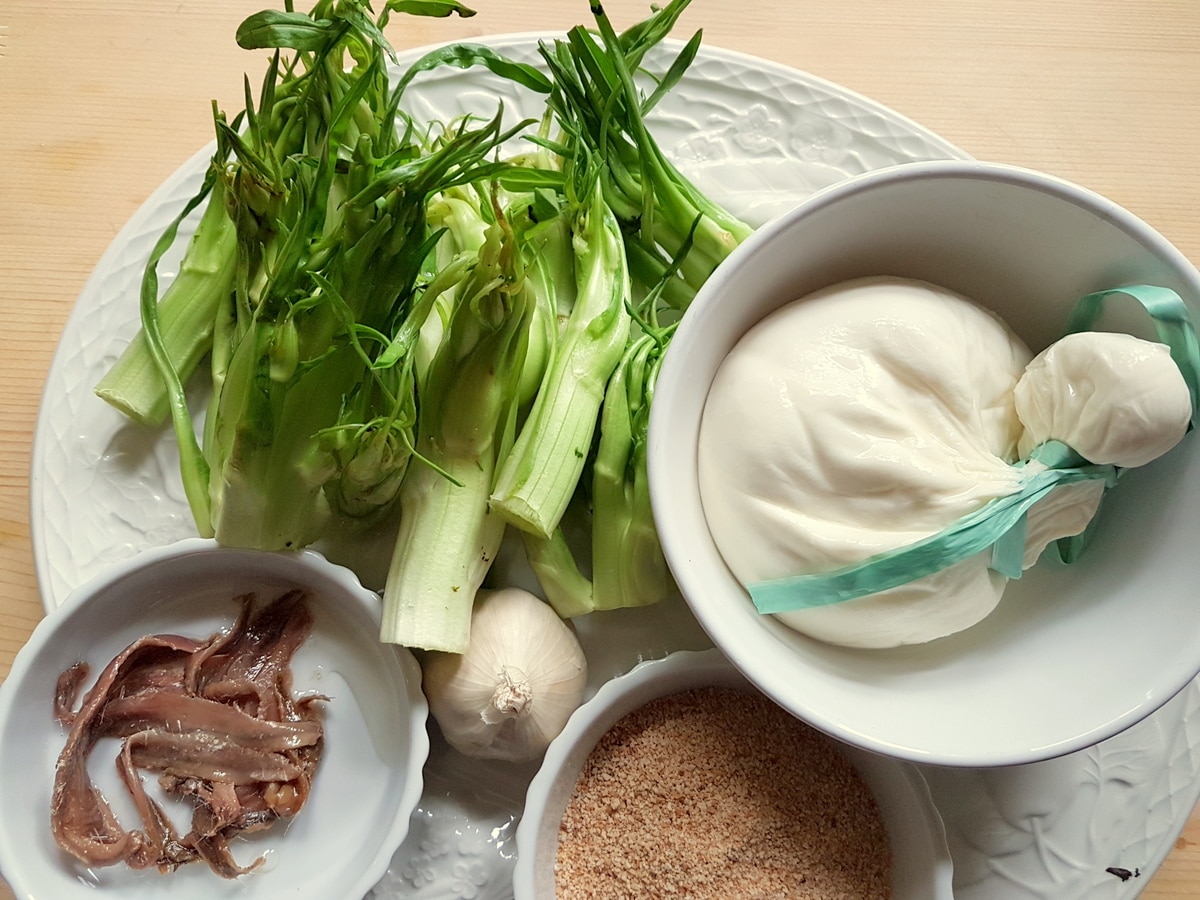

Expert Tips
Preparing Puntarelle: Like other types of chicory, puntarelle has a natural bitterness that can be mitigated by soaking. After slicing the puntarelle into thin strips, soak it in ice-cold water for 15 minutes. In Rome, it’s common to find puntarelle already prepped and soaking at vegetable stalls.
Cooking Chicories: The bitterness of chicories like puntarelle tends to diminish with cooking. Since this recipe involves sautéing the puntarelle, there’s no need for an extended soaking period like you would if you were going to eat it raw. Cooking will naturally soften the bitter notes, making the puntarella more palatable and enjoyable.
Anchovy Integration: When cooking with anchovies, it’s crucial to let them melt into the olive oil. This technique helps distribute their savory flavor evenly throughout the dish without leaving any large bits. The key is to stir frequently with a good amount of oil over medium or low heat.
Step by Step Instructions
1) If using whole Catalonian chicory, remove the outer leaves to access the heart where the puntarelle is located. Trim any long stalks and then slice the puntarelle finely lengthwise. Soak the slices in ice-cold water for 15 minutes, then drain and pat dry.
2) Bring a large pot of water to a boil, add salt and bring it to a boil again. Add the cavatelli pasta and cook until al dente, according to package instructions. Drain and reserve one cup of pasta water.
3) Meanwhile, in a large skillet, heat the olive oil over medium heat. Add the anchovies, garlic, and optional peperoncino flakes. Cook until the anchovies disintegrate and the garlic softens.
4) Add the drained puntarelle and sauté for a few minutes, stirring continuously. Add a few tablespoons of the reserved pasta cooking water if the puntarelle begins to dry out.
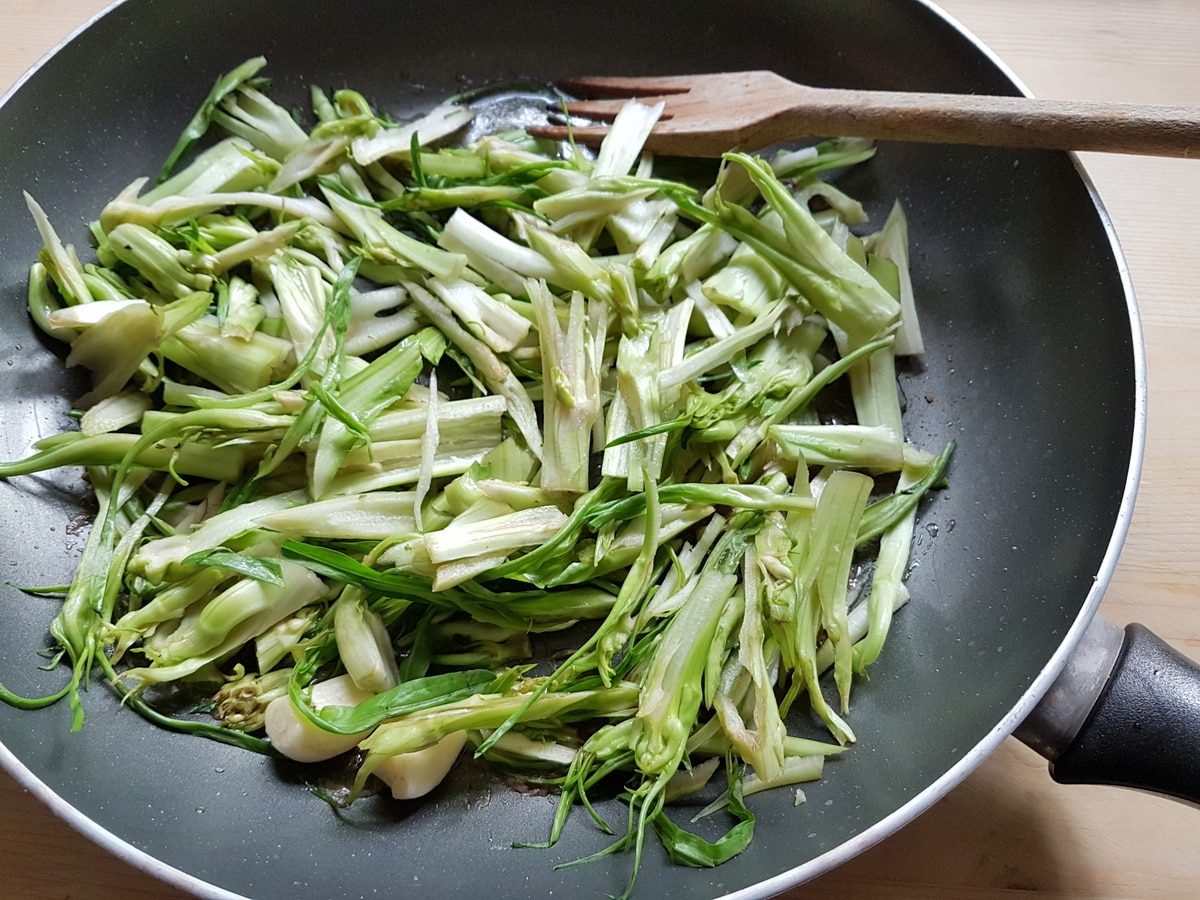

5) In a separate small frying pan, heat two tablespoons of olive oil. Toast the breadcrumbs until golden, stirring frequently to prevent burning.
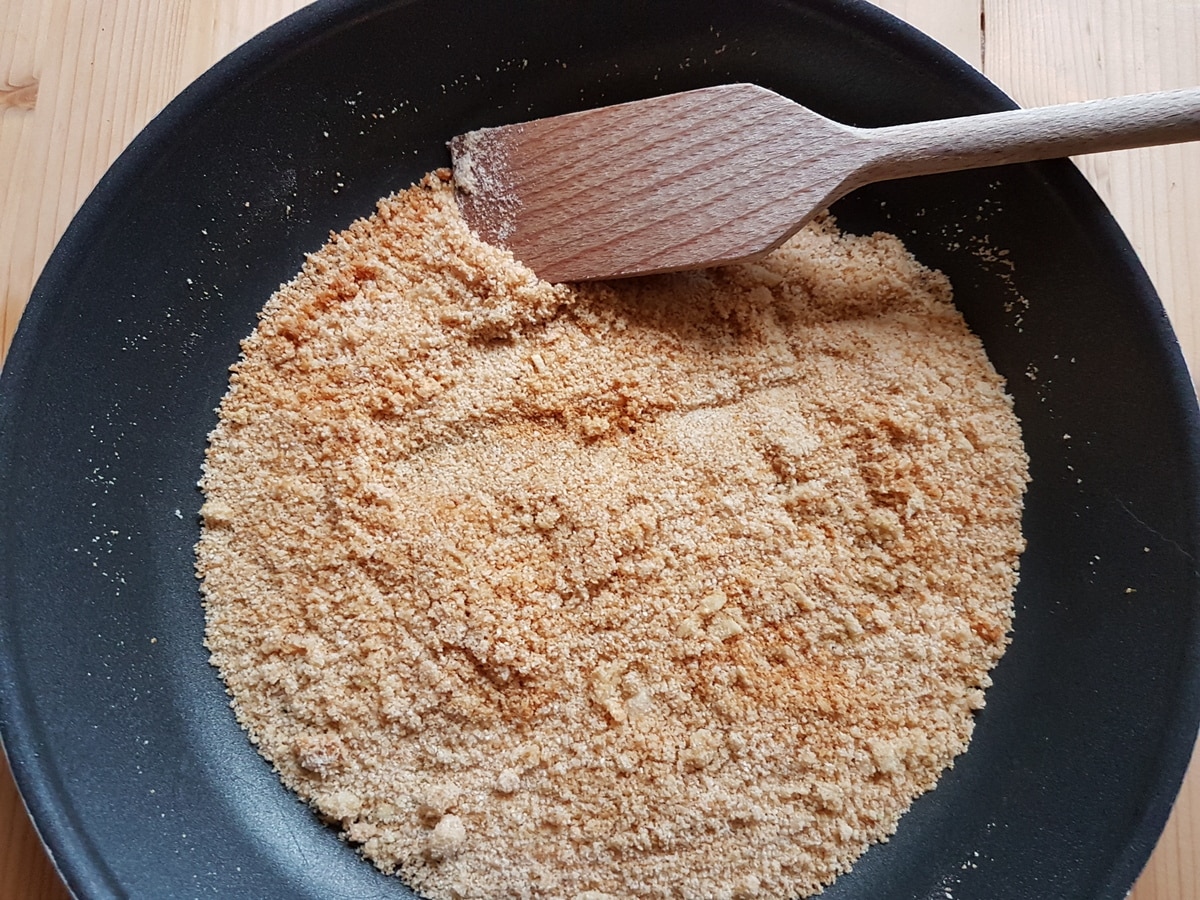

6) Add the pasta to the pan with the puntarelle, stir in the toasted breadcrumbs, and toss everything together over high heat.
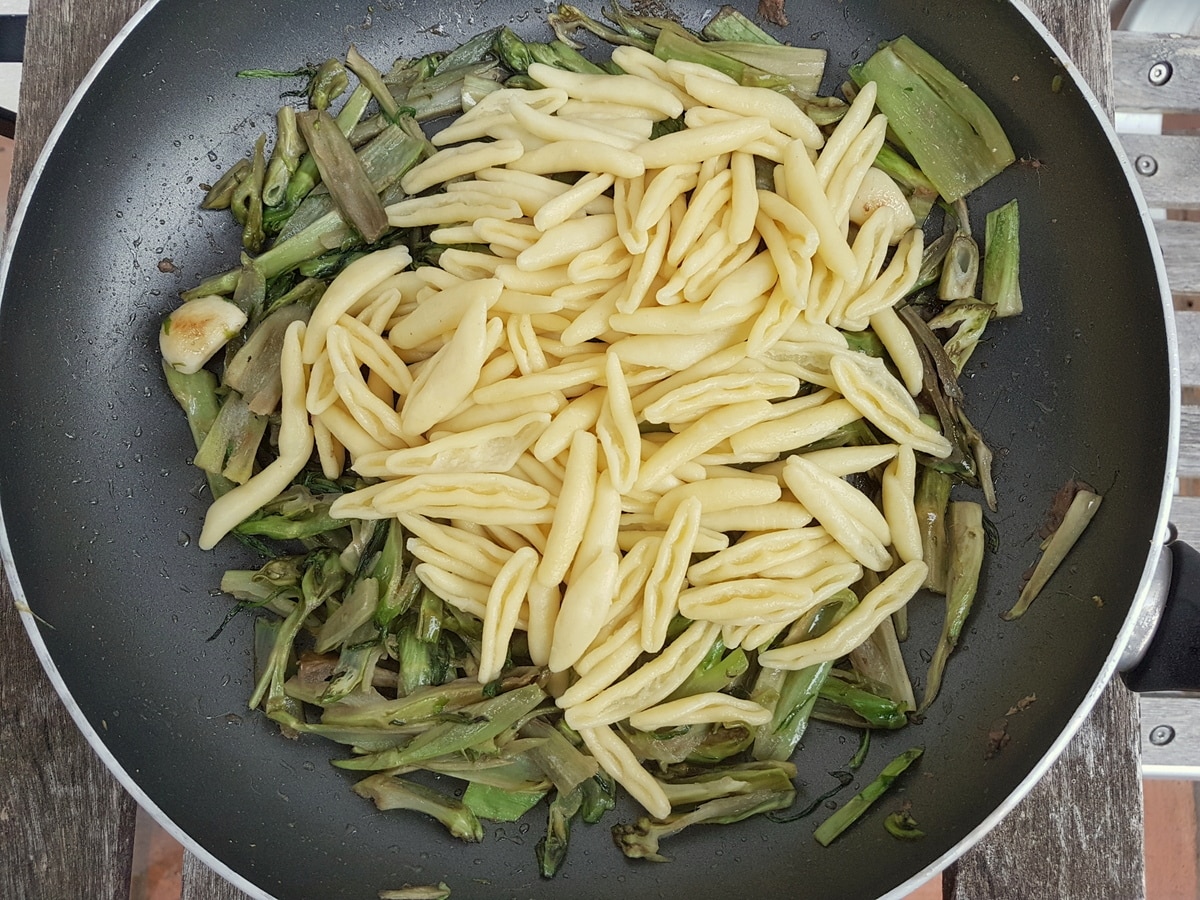

7) Cut the burrata into pieces and place on top of the pasta. Serve immediately, allowing diners to mix the burrata into their servings at the table.
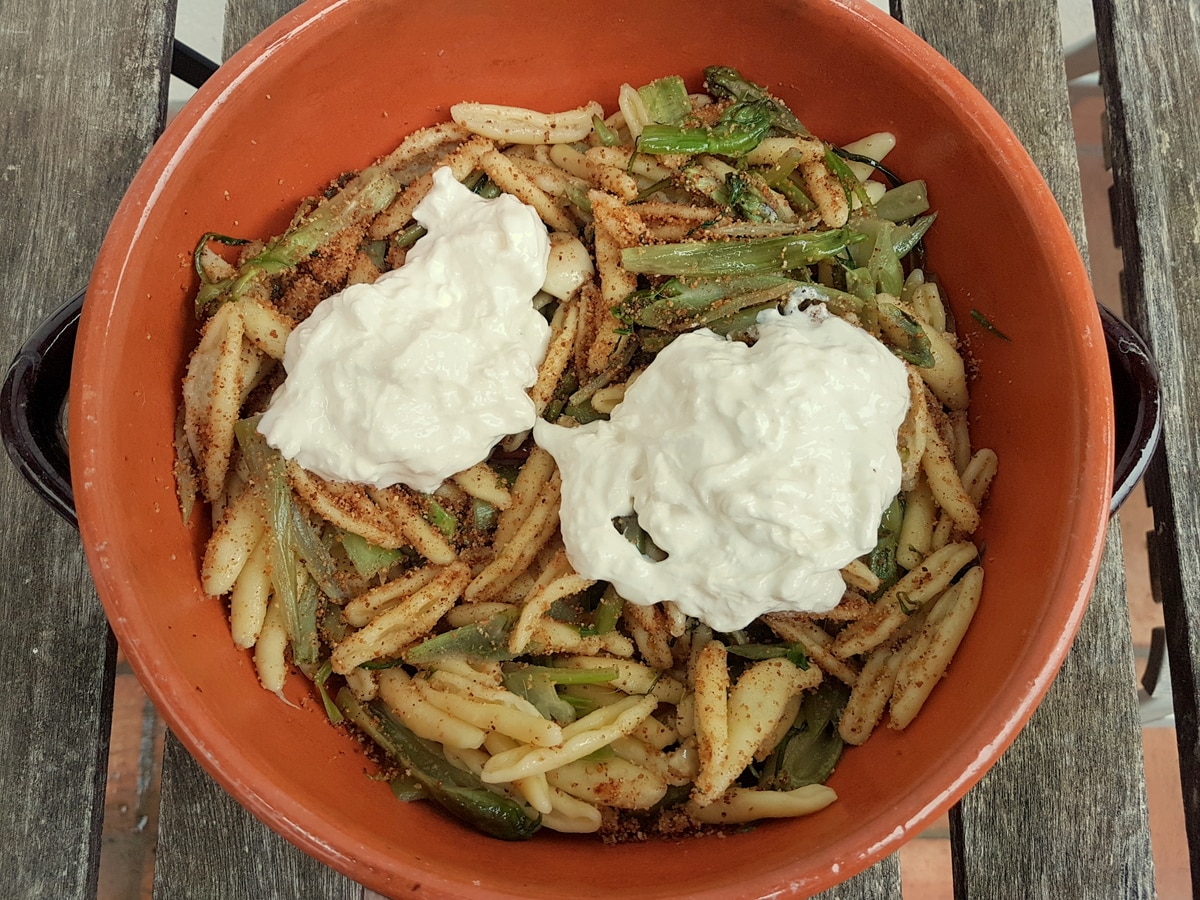

Storage and Leftovers
Allow the puntarelle pasta to cool to room temperature before transferring it to an airtight container. If you are planning to store a portion for later, do not add the burrata to the entire dish. Instead, reserve the burrata to be added fresh upon serving. Store the pasta in the refrigerator, where it will keep fresh for up to 3 days.
To reheat the leftovers, place the pasta in a microwave-safe container and cover it. Heat on medium power for about 2 minutes, then stir. Continue heating in 30-60 second intervals, stirring in between, until the dish is hot throughout. Once reheated, add fresh burrata on top of the warm pasta to enjoy its creamy texture at its best.
FAQs
In the U.S., puntarelle can be a bit rare but is sometimes available at Italian specialty stores, upscale supermarkets with extensive gourmet produce sections, and farmers’ markets that offer unique, seasonal vegetables. Its peak availability is during the cooler months, from late fall to early spring. Additionally, you might find puntarelle through online specialty produce suppliers, especially during its growing season.
To make this recipe vegetarian, you need first to omit the anchovies. Burrata is typically made using animal rennet, which is not suitable for vegetarians. However, some types of burrata are made with microbial rennet, which is vegetarian-friendly. Always check the packaging to ensure it doesn’t use animal rennet.
More Recipes You May Like:
If you make this puntarelle pasta with burrata recipe, I’d love to hear how it turns out. Please write a comment here on the blog or post a comment on the Pasta Project Facebook page.
Your feedback means a lot to me!
Buon Appetito!
Pin for Later:
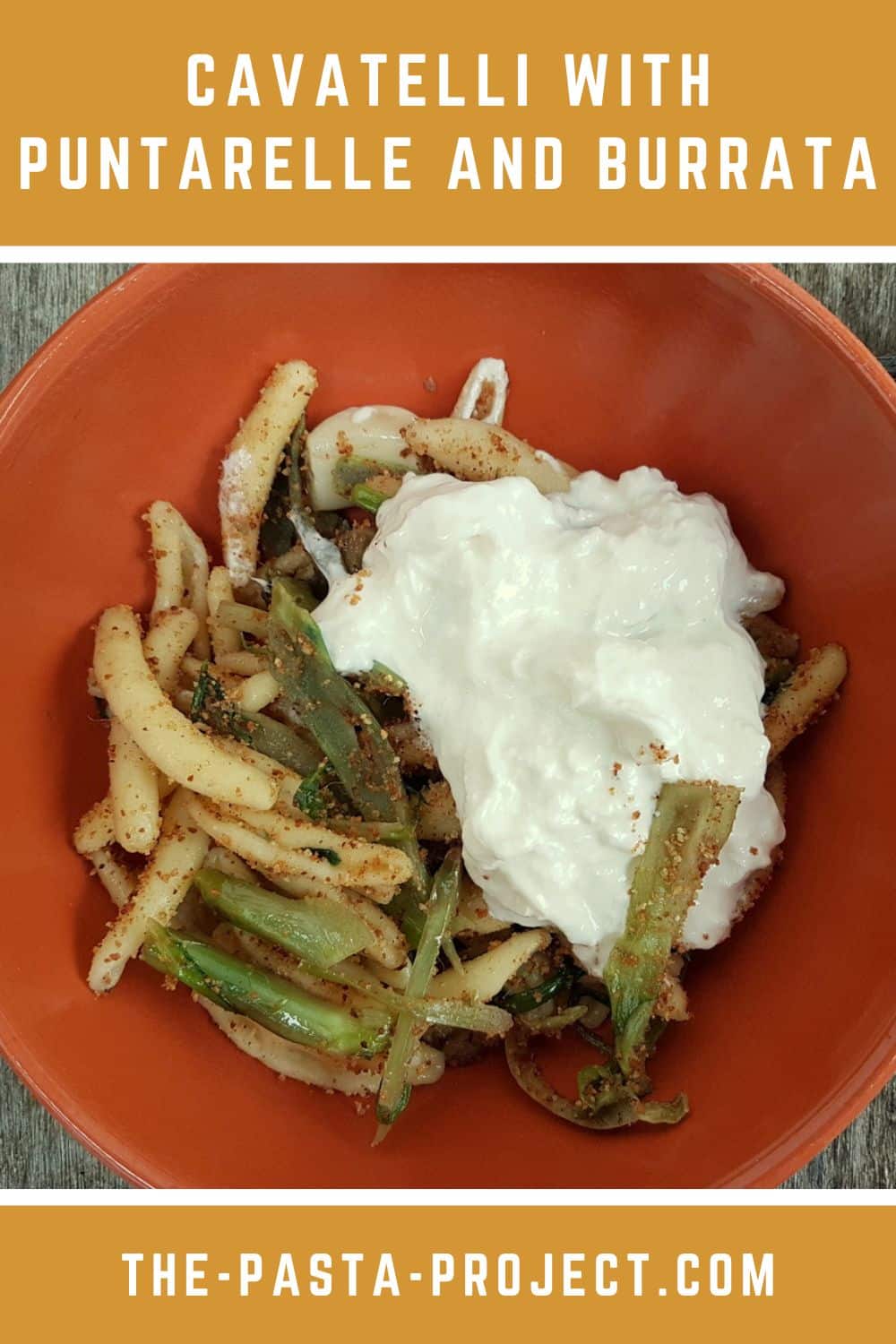

If you are interested in learning how to make homemade pasta and different types of gnocchi, check out my shop page for some great video online courses from my friends in Rome! Nothing beats learning to make pasta from Italians! Plus while you’re there why not order a copy of one of my pasta recipe cookbooks or checkout some recommended pasta making tools?
Reader Interactions



